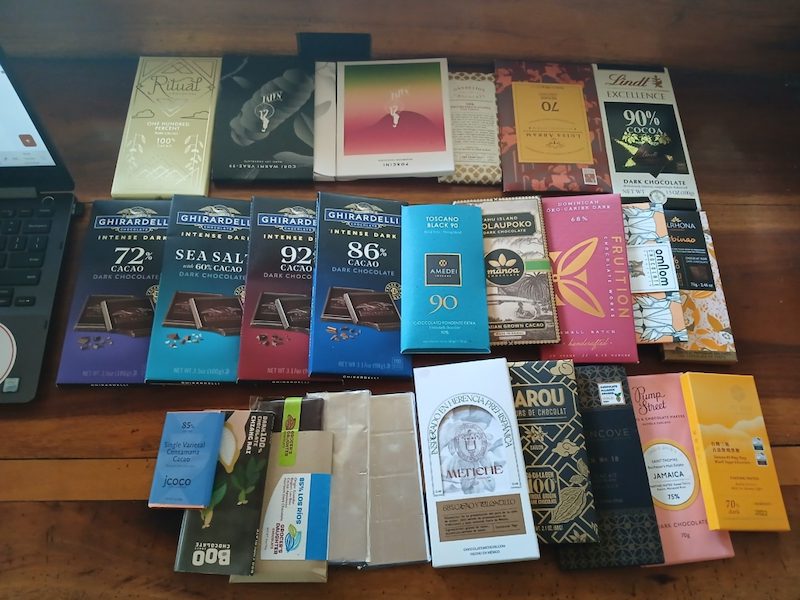Blog
A professional crash course for cacao and chocolate lovers!
Recently, I participated in an exciting online training opportunity. The “Chocolate Making from the Bean Program” is a professional two-month course that began on September 27 and concluded on November 29, 2024. Participants who took the course, including me, came from various backgrounds and professions but all had a passion for chocolate! With seven years…
Read MoreA moment with Rachael Harff, Chelonian Keeper at the Turtle Survival Center
Q&A with Samih Young, BFREE Wildlife Education Fellow This summer, Samih Young and Rachael Harff got to know each other while participating in the Fourth Annual Turtle Survey of the BFREE Privately Protected Area. The survey is a collaboration between BFREE and Turtle Survival Alliance‘s Volunteer Research Team – also known as the North American…
Read MoreThe Bladen Review 2024
The 9th edition of BFREE’s annual magazine is now available in an interactive format online at Issuu! Get the latest news from the field station and learn about exciting research, conservation and education projects taking place in and around the rainforests of Belize. Highlights of the 2024 magazine include: updates on the conservation and outreach programs associated with…
Read More2025 Long-term Turtle Survey in the Jungle
July 6 – 16, 2025 Join the Belize Foundation for Research & Environmental Education (BFREE) and the Turtle Survival Alliance’s Volunteer Science Program to participate in a long-term population monitoring project for freshwater and terrestrial turtle species located within BFREE’s Privately Protected Area in southern Belize. The BFREE Privately Protected Area is a 1,153-acre reserve…
Read MoreCelebrating the 8th Annual Hicatee Awareness Month
Hicatee Awareness Month began in 2017 to draw attention to the status of Belize’s only critically endangered reptile, the Central American River Turtle locally called “Hicatee”. Eight years later, BFREE and our NGO international and local partners including Turtle Survival Alliance, Zoo New England, Belize Wildlife Referral Clinic, WCS Belize, Community Baboon Sanctuary and Savannah…
Read MoreReptiles through the eyes of a newbie: Wanna Be Herpetologist
Reptiles at BFREE At BFREE, a diverse range of reptiles thrive within its boundaries. I’ve been fortunate to encounter several species firsthand, from the slow-moving yet captivating turtles to the agile and vibrant lizards. My recent encounters with snakes have deepened my interest in these often misunderstood creatures, revealing the unique roles they play in…
Read MoreBelize’s Mud Turtles
Belize is lucky to be home to both mud and musk turtles belonging to the Kinosternidae family. In science, a family is a group of related species that share similar traits. These traits can include their habitat or diet. The shared characteristics among these species indicate their close relationship, just like how family members at…
Read MoreBFREE Staff Adventure 2024!
In recognition of a successful field season, fifteen BFREE and Crioco staff members participated in an exciting two-day trip. We chartered a bus, so that we could slowly wind our way along two of Belize’s beautiful highways – the Hummingbird and the Coastal. We took our time as we searched for waterfalls, animals, caves, farms, delicious…
Read MoreMy Encounters with the Birds of BFREE!
The 1,153 acre BFREE Reserve where I work is a haven for diverse species of birds and my many encounters with them have always been memorable ones. Being in the heart of the jungle has provided me with many opportunities such as witnessing a spectacle display of birds in flight, birds feeding, bird dances, and…
Read MoreStudent Advocate Workshops for Earth Day
As part of Earth Day festivities, Heather Barrett, Deputy Director, and Jaren Serano, Dermatemys Program Coordinator with the support of Wildlife Education Fellow, Samih Young, delivered workshops at Sacred Heart Junior College and University of Belize. Over 60 students in Natural Resource Management and Biology as well as four educators participated in the workshops held…
Read More

